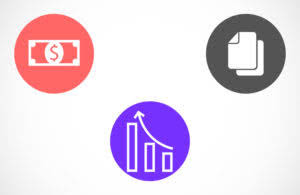
An entity does not include any cash flows for financing the assets or re‑establishing biological assets after harvest (for example, the cost of replanting trees in a plantation forest after harvest). Under this accounting method, farms—like any other businesses—must report their taxable income the instant it reaches their hands or bank accounts. unearned revenue Checks cannot be postponed in order to avoid paying taxes and must be included as taxable farm income during the accounting period. Essentially, when the money is available for the farm to use, it has to go through financial reporting. Keeping up with technological advancements ensures that the farm utilizes the latest tools and techniques for efficient financial management. This includes staying informed about new software, equipment, and industry practices.

Agricultural Accounting for Farm Inventory
IAS 41 applies to agricultural activities, which are the management of the biological transformation of plants and animals for sale into agricultural produce or into additional biological assets. For tax purposes, farm inventory can be valued using the cash basis or accrual method. Unique to farming, there are specific methods such as the farm-price and unit-livestock-price methods, which help in determining the farm inventory value for Schedule F tax reporting. Efficiency isn’t solely about reducing costs; it’s about maximizing returns on each dollar spent.
UltraFarm Accounting Software (Top Farm Tax Software)
![]()
Proper bookkeeping for farmers helps them understand their farm’s financial health, comply with tax regulations, and make informed decisions about the future of their business. Agricultural accounting is just different from standard accounting and having the right tools to assist your farm managers and agricultural accountants in keeping records straight is vital. Accounting software designed for retail or manufacturing assume short, evenly-distributed turnover. On the other hand, crop and livestock production and marketing are characterized by long overlapping cycles that rarely correspond to calendar years.
![]()
What about the trees and vines or livestock raised for the production?

As a result inventories must be “double entered,” massaged in spreadsheets, or simply ignored until a balance sheet is required. Finally, additional record keeping, when it comes to farm inventory, can allow you to view and manage your cost and profit centers effectively. Examples include monitoring feed and crop inputs on hand, projecting margins on growing crops and livestock, and knowing when products will be available for sale or delivery. Agricultural business accounting is an essential component for the success and sustainability of Bookkeeping for Startups modern farming enterprises.
- Agricultural accounting programs can track the quantity details like weight, acres, and more, meaning you’ve got all the relevant data you need in one place without fumbling between spreadsheets.
- With its user-friendly interface, QuickBooks enables farmers to easily track all income and expenses, manage invoicing, and generate accurate reports.
- Shoeboxed is an expense & receipt tracking app that helps you get reimbursed quickly, maximize tax deductions, and reduce the hassle of doing accounting.
- With the right systems and support in place, you’ll turn bookkeeping from a burden into a powerful asset that drives success on the land.
- For livestock, there are daily, rather than seasonal, activities and the challenges of capitalizing development costs for replacement breeding animals and gestating and lactating “pre-weaned” animals.
- But with regular wear and tear, this equipment will depreciate — this can muddle any tax situation as the value of your equipment will affect your tax bill.
Furthermore, the preservation of biodiversity poses both a challenge and an opportunity for agricultural finance, where investments in sustainable practices can lead to long-term benefits. Transparent reporting of environmental grants and their impact on a company’s value chain is essential. Financial data should reflect the ongoing efforts and future commitments towards mitigating the effects of climate change, capturing both the costs and potential long-term financial benefits of such investments. Accurate reporting of government subsidies and grants is essential for agricultural businesses to maintain transparency in financial statements. The financial support received impacts both the presentation and the disclosure on the financial statements, as well as their items on the balance sheet and income statement. While many generic accounting software options can meet a farm’s needs, farm accounting software handles managing the specific needs of farmers and agricultural businesses.

Determining profits and losses requires special attention in agriculture because of the industry’s seasonal nature and long production cycles. A wheat farmer might spend money on seeds, what is agricultural accounting fertilizer, and equipment maintenance throughout the growing season but only generate income during a brief harvest period. Agricultural accounting systems must properly allocate these costs and revenues to provide meaningful profit and loss information. They provide user-friendly interfaces and essential features like income tracking, expense management, and reporting, making them ideal for smaller operations with basic needs.

